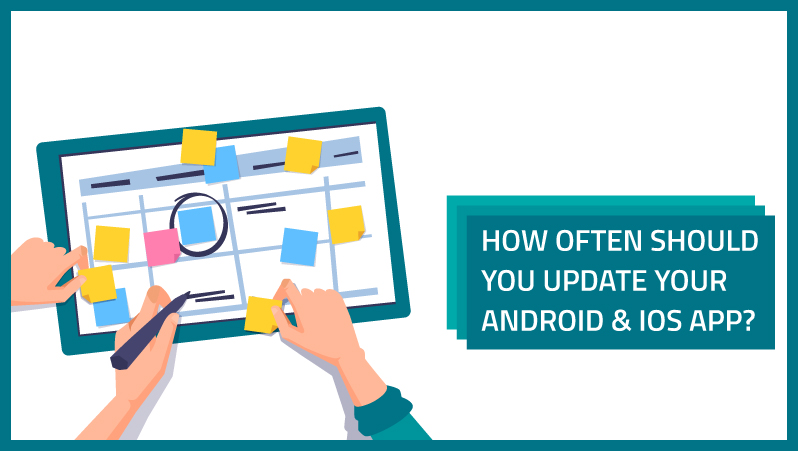Periodic updates are quite common with modern apps. Updates are the best way to improve the apps in a changing environment. In fact, it is a much-required feature of an app that determines its sustainability in a longer run, along with that it makes the app more secure.
Hence, it is agreed that developers should definitely provide updates to their apps, but the big question is, how often? Because you simply don’t want to bog down the users with a large number of updates. This might simply work in spoiling the user experience, rather than enhancing it. Users definitely want their app to be more secure and loaded with features, but definitely, they don’t want to be burdened and overloaded with app updates.
The timing of the update is extremely important. While some of the updates might be released before, which might include some new features, promotional features or might be an update to make the app compatible with the latest OS update. On the other hand, there are reactive updates, like fixing a known bug or responding to the changing market. This article will discuss certain benchmarks, which will you as a developer to determine when to release a particular update.
Determinants for App release
This section will highlight certain determinants or benchmark that will help you to decide that when you should release the update for your app.
- Fixing Bug/ Improving Performance: Fixing a known bug in the app or improving performance, is something which needs to fixed in a shortest possible time. These are not avoidable, while they are not expected as well by the users. The best thing which the app developer can do is release an update every week or fortnight. In this way, the user will be always aware that when the app is going to be updated, like on which particular day of the week. Random updates can annoy users. Worse will be frequent notifications prompting the user to update.
- UX/UI Enhancement: The UX or the UI gets updated periodically in order to improve the user experience. Often developers determine the improvements that can be made on the user interface, and implement these improvements in the form of updates. The improved UX leads to ease of use for the user and promotes increased user engagement. Enhanced UX might have additional features or cosmetic changes (such as a change in the logo) on the interface. On some occasions, UX changes take place as a result of a change in the design language by the App store company. However, updates for UX/UI enhancements are not frequent and developed after thorough research and user feedback.
- Developing loyal users: Some users are capable of studying the app better, and these users often come up with their valuable suggestions or possible tweaks. The implementation of the suggestions leads to higher user engagement, and the developer also assures that he is responsive and values the user feedback. At the end users are happy, and they remain loyal to the app.
- Promotion of the app: Updates actively the promote the app amongst the users, and helps the app to stand out of the crowd. The user gets notified whenever an app is released, and it instantly grabs their attention.
- New Features: Adding new capabilities to the app will enable certain deliverables which were not possible previously. These are the scheduled updates, and the user can always install the updates within the app’s lifecycle. User feedback is considered by the developers while adding a new feature.
Conclusion
There is no defined timeline or period for app updates. However, best practices in collaboration with the market environment should be followed for app updates. The update needs to be collaborated between the developer and the users, by determining when a particular update need to be released for an app. Hence, update your android app or update your iOS without burdening the users, simply by following the benchmarks mentioned in this article.


